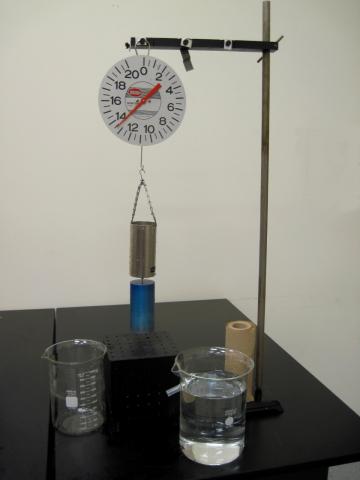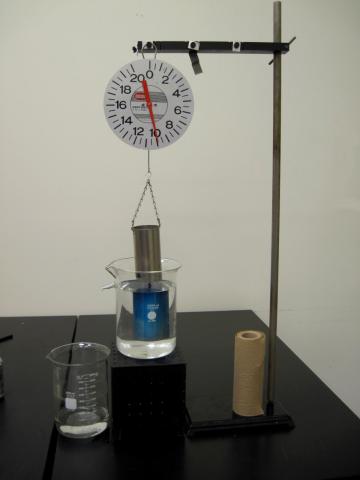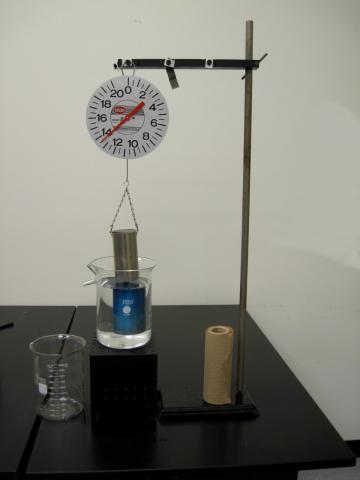Archimedes Principle - Buoyancy
This large apparatus is designed to give a clear and convincing demonstration of Archimedes’ Principle. Archimedes’ Principle states that an object floating or immersed in a liquid is buoyed up by a force equal to the weight of the displaced liquid.
It is important that the solid cylinder is completely immersed in water but that the cup above it does not touch the water. Ahead of time, adjust the height of the horizontal bar on the ring stand so that when the cylinder is in the water and the displaced water is poured into the cup, the cylinder is in water but the cup is not. See Figure 2.
- Place the solid cylinder inside the cup to show that they have exactly the same volumes.
- Pull out the cylinder, hang it from the bottom of the cup and hang the combination from the spring scale. It should read about 13.5N (Fig 1).
- Remove the combination from the spring scale and set the overflow beaker on the platform. Fill the overflow beaker with water until water flows out of the overflow spout into a second catch beaker. When the water stops flowing, empty the catch beaker.
- Carefully lower the cylinder-cup combination into the overflow beaker and hang it from the spring scale. Catch all of the water! The spring scale should now read about 10N (Fig. 2).
- Now pour the water from the catch beaker into the cup. The cup should fill right to the rim. The spring scale should return to 13.5N (Fig. 3).
Required Equipment



